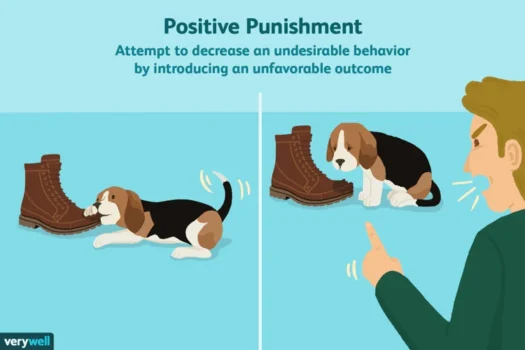As a pet owner, training your California Spangled can be a challenging task. It’s normal to feel perplexed about which methods to use, especially when it comes to positive reinforcement and punishment. Both have their benefits and drawbacks, but which one is more effective? In this article, we’ll explore the ins and outs of positive reinforcement and punishment and when to use each method to train your California Spangled. Let’s dive in and discover the best approach for a happy and healthy cat-owner relationship.
What is Positive Reinforcement?
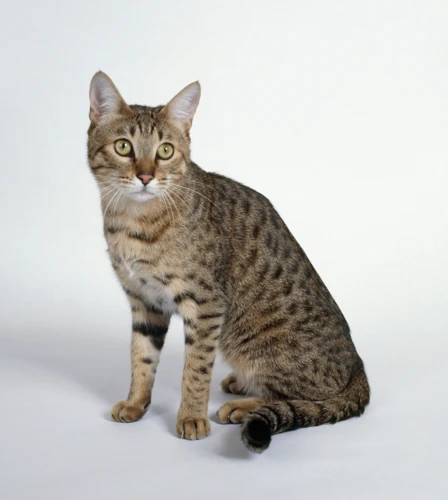
Positive reinforcement is one of the most popular and effective forms of dog training. It is a gentle and humane approach that emphasizes rewarding desired behavior instead of punishing unwanted actions. This method of training can be particularly effective for California Spangled cats, who are known for their intelligence and high energy levels. Positive reinforcement can help to shape and reinforce good behaviors, making it easier to correct bad habits and build a strong and positive bond between pet and owner. In this section, we’ll take a closer look at what positive reinforcement is, how it works, and some examples of how it can be used to train your California Spangled. If you want to know more about positive reinforcement training for California Spangled, you can check our positive reinforcement article.
How it Works
How Positive Reinforcement Works:
Positive reinforcement works by rewarding your California Spangled when it displays desirable behavior, making it more likely to repeat the behavior in the future. This is achieved by associating a specific behavior with a reward, which can be anything that the cat enjoys, including treats, toys, and praise. When your California Spangled performs the desired behavior, you give it the reward immediately. Over time, the cat learns that the behavior is associated with a positive outcome, and it becomes more likely to repeat the behavior in order to receive the reward again. Positive reinforcement is a highly effective training technique as it encourages good behavior through positive experiences, rather than relying on fear or threats.
How Punishment Works:
Punishment works by discouraging your California Spangled from displaying undesirable behavior through the application of an unpleasant consequence. This can be done through a variety of means, including scolding, sprays of water, or a loud noise. When your California Spangled displays negative behavior, the punishment is applied immediately. Over time, the cat learns that the behavior results in unpleasant consequences, and it becomes less likely to repeat the behavior in order to avoid the punishment. While punishment can be effective in stopping unwanted behavior, it can also have negative effects, including the development of fear or even aggression.
It is important to note that while both positive reinforcement and punishment can be effective in training your California Spangled, it is generally recommended to rely more on positive reinforcement. This is because positive reinforcement is not only a more ethical approach to training, but it also has been shown to be more effective in the long term. By creating a positive association between good behavior and rewards, your cat will be more motivated to behave in desirable ways, leading to a happier, better-trained pet.
For more information on positive reinforcement and how to use it to train your California Spangled, check out our article on California Spangled positive reinforcement, our guide to correct positive reinforcement training techniques for California Spangled, or our article on clicker training for California Spangled.
Examples
When it comes to understanding how positive reinforcement and punishment work, examples can be helpful in illustrating their effectiveness in training your California Spangled. Here are some examples for both methods:
Positive Reinforcement Examples:
- When your California Spangled comes to you on command, reward them with a treat or lots of praise and cuddles.
- If you want your California Spangled to stop scratching the furniture, providing an appropriate scratching post and rewarding them with a treat when they use it can reinforce the desired behavior.
- If you are trying to teach your California Spangled to come when called, calling their name and rewarding them with a treat or praise when they respond can help reinforce the behavior.
Punishment Examples:
- If your California Spangled jumps up on the kitchen counter, giving them a firm “no” and removing them from the counter can be a form of punishment.
- If your California Spangled bites or scratches while playing, immediately stopping play and withdrawing attention from them can serve as a punishment to discourage the behavior.
- If your California Spangled ignores your commands, a stern voice and withholding a treat or affection can show disapproval and serve as a form of punishment.
It’s important to note that punishment should never be harmful or traumatizing to your cat. It should also be used sparingly and only as a last resort when other methods of training have not been effective. Positive reinforcement, on the other hand, can be used frequently and consistently to encourage desired behaviors and maintain a positive training experience for both you and your furry friend.
What is Punishment?
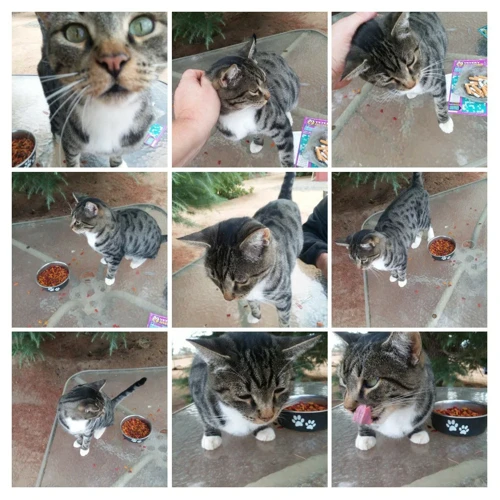
As a California Spangled owner, it’s important to understand the concept of punishment in training. Punishment involves consequences given to discouraged unwanted behavior. While some owners may feel that punishment is necessary for effective training, it’s essential to recognize the potential negative impact it can have on your cat if not used correctly. Let’s take a closer look at the concept of punishment, including its definition, how it works, and some examples of punishment in cat training.
How it Works
Positive reinforcement and punishment are two methods for training pets and achieving desired behaviors. Positive reinforcement works by rewarding a behavior, which increases the likelihood of the behavior being repeated. On the other hand, punishment works by decreasing the likelihood of an unwanted behavior by introducing an aversive consequence.
To understand how positive reinforcement works, it’s essential to define the terms used in this method. In positive reinforcement, the behavior is followed by a reward, also known as a reinforcer, which increases the likelihood of the behavior being repeated. A reward or a reinforcer can be anything the cat likes, such as treats, praise or toys. Positive reinforcement works because it helps the cat associate a desired behavior with a positive experience.
On the other hand, punishment works by introducing an aversive consequence that decreases the likelihood of an unwanted behavior being repeated. In punishment, an aversive consequence follows the unwanted behavior that the cat exhibits. The punishment can come in many forms, such as loud noises, physical corrections, or a spray of water. The idea behind punishment is that the aversive experience will help the cat learn that the unwanted behavior will lead to negative consequences, decreasing the likelihood of it being repeated.
Positive reinforcement and punishment are methods of training pets that have different approaches but aim to achieve the same goal. Positive reinforcement rewards good behavior, while punishment introduces an aversive consequence to decrease the likelihood of unwanted behavior. The table below summarizes how each method works.
| Method | How it works |
| Positive reinforcement | Rewards desired behavior to increase the likelihood of it being repeated. |
| Punishment | Introduces an aversive consequence to decrease the likelihood of unwanted behavior being repeated. |
Examples
Positive reinforcement is a training technique that involves rewarding desirable behavior to encourage its repetition. Here are some examples of positive reinforcement that you can use to train your California Spangled:
- Treats: Giving your cat a treat immediately after it performs the desired behavior, such as sitting or coming when called, is a common form of positive reinforcement. Over time, your cat will associate the desired behavior with the treat and be more likely to repeat it.
- Praise: Cats can also be rewarded with verbal praise, such as “Good job!” or “Bravo!” in a happy and enthusiastic tone of voice. This can help build a positive relationship with your cat and encourage them to continue the good behavior.
- Playtime: Some cats respond well to play as a reward for good behavior. For example, your California Spangled might enjoy a quick game of fetch with its favorite toy or some quality playtime with you.
- Cuddles: Many cats crave affection and respond well when they receive it as a reward for good behavior, such as remaining calm during grooming or sitting patiently while their food is being served.
On the other hand, punishment involves providing negative consequences to discourage unwanted behavior. Here are some examples of punishment that you may have inadvertently used in the past:
- Scolding: Yelling at your cat or using an angry tone of voice to respond to unwanted behavior can be a form of punishment. This can be counterproductive as it can make your cat fearful or anxious, leading to further undesirable behavior.
- Punishing physically: Physically punishing your cat, such as hitting or physical reprimand, can cause pain and psychological distress, leading to fear and aggression. This can worsen the problem behavior rather than improve it.
- Isolation: Removing your cat to a separate room or restraining them for an extended period is another type of punishment. However, this can be a serious problem as it can cause a sense of loneliness and abandonment in your cat, leading to anxiety and stress.
It is essential to choose positive reinforcement as the primary training strategy to create a good bond between you and your California Spangled.
The Case for Positive Reinforcement

Are you tired of constantly punishing your California Spangled for their undesirable behavior? Punishment may seem like the most effective way to train your furry friend, but have you considered the benefits of positive reinforcement? Using rewards instead of punishment can have a significant impact on your cat’s behavior and relationship with you. Let’s dive deeper into the case for positive reinforcement and the advantages it can bring to training your California Spangled.
Benefits
Positive reinforcement and punishment are training techniques used by many California Spangled cat owners. Both methods have their benefits, and it’s up to the cat owner to decide which technique is most effective for their cat. Here are some of the benefits of each technique in more detail:
| Positive Reinforcement | Punishment |
|---|---|
| Creates a positive association with training and the owner | Can quickly correct unwanted behavior |
| Builds trust and confidence between the owner and the cat | Can deter the cat from repeating unwanted behavior |
| Encourages the cat to learn and problem-solve on their own | Can be used as a last resort for severe behavior problems |
| Fosters a more relaxed and positive training environment | Can be a more immediate solution to behavior problems |
| Can help to prevent future behavior problems from arising | Can be an effective technique when used sparingly and correctly |
It’s important to note that while punishment can be effective in terms of quickly correcting unwanted behavior, it can also have negative consequences such as creating fear and anxiety in the cat. Positive reinforcement, on the other hand, focuses on rewarding the cat for desired behavior and can lead to a more positive and trusting relationship between the cat and owner. Ultimately, the benefits and effectiveness of each technique depend on the individual cat and their unique personality and learning style.
Research
There have been several studies conducted on the effects of positive reinforcement and punishment on animal training, including studies specific to cat behavior.
One study published in the Journal of Applied Animal Welfare Science found that using positive reinforcement techniques resulted in cats learning new behaviors more quickly and responding more consistently than when punishment was utilized. The study noted that using “negative reinforcement may lead to decreased welfare and an increased risk of redirected aggression.”
Another study published in the Journal of Feline Medicine and Surgery found that cats trained using positive reinforcement had better retention of learned behaviors compared to those trained with punishment. The study also found that cats trained with punishment displayed more aggressive and fearful behaviors.
It is important to note that punishment, when administered properly and sparingly, can still be effective in certain training scenarios. However, research suggests that positive reinforcement has more long-lasting effects on behavior and overall welfare.
Summary of research findings:
– Positive reinforcement has been found to result in quicker learning and more consistent responses in cats compared to punishment.
– Punishment can lead to decreased welfare and an increased risk of aggression in cats.
– Cats trained using positive reinforcement have better retention of learned behaviors compared to those trained with punishment.
– Cats trained with punishment display more aggressive and fearful behaviors.
The Case for Punishment
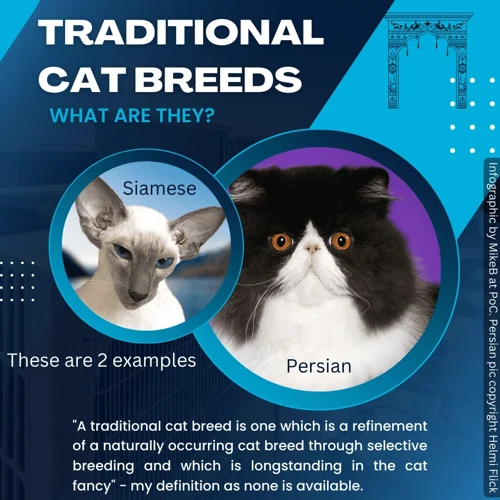
While positive reinforcement has its benefits, some trainers may argue that punishment can also be an effective tool for training animals such as the California Spangled. However, it is important to understand the potential drawbacks and risks associated with punishment-based training methods. Let’s explore the case for using punishment as a training tool for your feline companion.
Benefits
Positive reinforcement and punishment have distinct benefits when it comes to training your California Spangled. Here is a breakdown of the benefits of each approach:
| Positive Reinforcement | Punishment |
|---|---|
|
|
It’s important to note that while punishment may seem effective in the short term, the potential drawbacks and negative side effects, such as stress to your cat and damage to your relationship with them, may ultimately outweigh any benefits. Positive reinforcement, on the other hand, can create a reliable and consistent path for shaping good behavior and strengthening your bond with your cat.
Research
Various research studies have been conducted to determine the effectiveness of positive reinforcement and punishment in training animals, including cats like the California Spangled. Let’s take a closer look at what the research says:
| Method | Effectiveness | Study |
|---|---|---|
| Positive Reinforcement | Highly Effective | A study published in the Journal of Applied Animal Behavior Science showed that dogs trained with positive reinforcement had higher success rates than those trained using punishment. The positive reinforcement group learned faster and retained the training for longer periods of time. |
| Punishment | Less Effective and Can Have Negative Consequences | Research has shown that animals trained with punishment can develop fear, anxiety, and stress. This can lead to avoidance behaviors and aggression. A study published in the Journal of Veterinary Behavior found that cats trained with physical punishment were more likely to show stress-related behaviors and aggression towards their owners. |
It is important to choose the right training method for your California Spangled. Positive reinforcement is generally the more effective and humane choice. However, it is important to use punishment correctly and only in specific situations where it is necessary. Always approach training with patience, perseverance, and love for your furry companion.
When to Use Positive Reinforcement
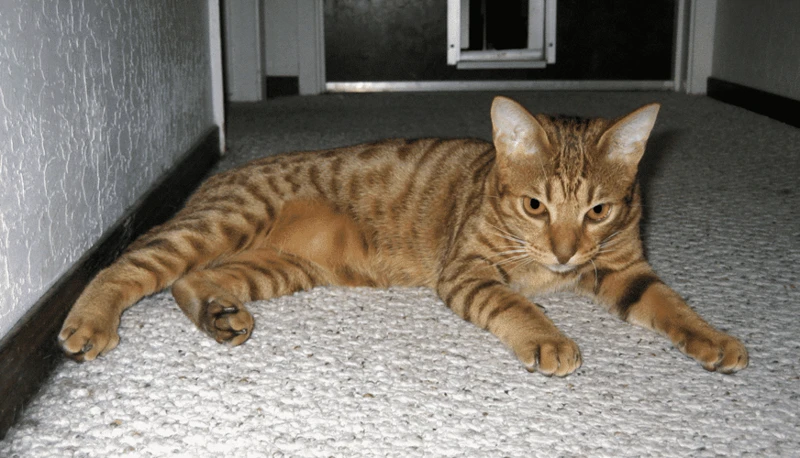
If you’re a California Spangled owner who wants to train your furry companion, you might be wondering when it’s best to use positive reinforcement. This approach is highly effective, but it’s not always the best choice for every situation. Understanding when to use positive reinforcement and why it’s so effective can help you create a successful training plan that meets your furry friend’s unique needs. Let’s explore some scenarios where positive reinforcement can be highly beneficial.
Training Scenarios
Different training scenarios require different types of reinforcement or punishment. Here are some examples of training scenarios and which approach is most effective:
| Training Scenario | Effective Approach |
|---|---|
| Teaching new behaviors | Positive reinforcement – encouraging and rewarding desired behavior |
| Correcting unwanted behaviors | Punishment – discouraging and correcting undesired behavior |
| Training fearful or shy cats | Positive reinforcement – building trust and confidence through rewards and encouragement |
| Training aggressive cats | Punishment – correcting aggressive behavior in a safe and effective way |
| Training medical behaviors (e.g. taking medication) | Positive reinforcement – rewarding cooperation and compliance with medical procedures |
| Training for agility or performance | Positive reinforcement – motivating and rewarding desired behavior to achieve optimal performance |
It’s important to assess which approach is most effective for each individual cat and each specific training scenario. While positive reinforcement is generally preferred, punishment may be necessary in certain situations. It’s also important to avoid harmful or abusive punishment techniques.
Behavior Challenges
When faced with behavior challenges, it can often be difficult to determine the best approach for training your California Spangled. Here are a few scenarios where positive reinforcement and punishment may be effective:
| Challenges | Positive Reinforcement | Punishment |
|---|---|---|
| Jumping | Reward your cat when they keep their paws on the ground, rather than jumping. Give small treats or verbal praise. | Use a spray bottle or a loud, sharp “no” to deter jumping behavior. |
| Scratching furniture | Offer alternatives like scratching posts and reward your cat when they use them. Use treats or positive reinforcement to encourage the behavior. | Try a verbal reprimand or a loud noise to discourage scratching. Be careful not to use punishment that could harm or traumatize your cat. |
| Biting | Use positive reinforcement to encourage your cat to play gently. Reward them when they use gentle play behavior. | A firm “no” or immediate removal from the situation can help discourage biting. |
It’s important to remember that every California Spangled is unique and may require a different approach to behavior challenges. Observe your cat’s behavior and adjust your approach accordingly. Avoid punishment that could harm or traumatize your cat, and use positive reinforcement consistently to encourage desired behaviors.
When to Use Punishment

As pet owners, it’s important to understand that punishment should never be the first method used for training your California Spangled. While positive reinforcement usually works best, there may be certain situations where punishment is necessary and effective. But when is it appropriate to use punishment as a form of training? Let’s explore some scenarios where punishment may be necessary to correct unwanted behaviors in your beloved feline companion.
Training Scenarios
When it comes to deciding whether to use positive reinforcement or punishment to train your California Spangled, it’s important to consider the specific training scenario at hand. Below are common training scenarios and the recommended approach:
| Training Scenario | Recommended Approach |
|---|---|
| Teaching Tricks or Commands: | Positive Reinforcement is highly effective when teaching new tricks or commands, as it encourages your cat to repeat the desired behavior for a reward. For example, if you want to train your California Spangled to come when called, you can give them a treat every time they do so. |
| Eliminating Unwanted Behaviors: | When it comes to eliminating unwanted behaviors, a combination of positive reinforcement and punishment may be necessary. For example, if your cat tends to scratch furniture, you can use positive reinforcement by providing a scratching post and rewarding them when they use it instead. However, if they continue to scratch furniture, you may need to use punishment by gently spraying them with water or making a loud noise to discourage the behavior. |
| Socializing with Other Cats: | Positive reinforcement is the best approach for socializing your California Spangled with other cats, as it encourages them to view other cats as a positive presence rather than a threat. For example, if you have multiple cats and want them to get along, you can reward them with treats when they play or show affection towards each other. |
It’s important to assess each training scenario individually and determine which approach will be most effective for your California Spangled. In some cases, a combination of positive reinforcement and punishment may be necessary to achieve the desired behavior. Additionally, it’s important to be consistent in your training methods to avoid confusion for your cat.
Behavior Challenges
Even with the best intentions, California Spangled cats may exhibit challenging behaviors during training. It’s important to approach these challenges with patience and a clear understanding of how to address them. Here are some common behavior challenges and how to handle them:
| Behavior Challenge | Solution |
|---|---|
| Refusing to Participate | If your California Spangled isn’t interested in training, it could be a sign that they’re not motivated by the reward you’ve chosen. Try switching to a different reward and see if that piques their interest. It’s also important to make sure your cat is comfortable and relaxed during training sessions. |
| Ignoring Commands | It’s common for cats to ignore commands at first. Be patient and keep practicing. Make sure you’re using clear and consistent commands and reinforcing positive behavior with rewards. |
| Showing Fear or Aggression | If your California Spangled is acting fearful or aggressive during training, it’s important to stop the session and assess the situation. It could be a sign that your cat isn’t comfortable or feels threatened. Try to identify triggers and work on desensitization techniques. It’s important to never use punishment in this situation, as it could further exacerbate the fear or aggression. |
Remember, every cat is different and it’s important to approach each training session with an open mind and willingness to adapt. With patience, consistency, and a solid understanding of positive reinforcement and punishment, you can train your California Spangled to be a well-behaved and happy companion.
Common Training Mistakes

Training a California Spangled can be a joyful experience for both the cat and the owner. However, it is important to avoid common training mistakes that can hinder the process and even damage the bond between the two. By recognizing these mistakes and learning how to overcome them, you can ensure a positive and successful training experience for you and your feline friend. Let’s explore some of the most common training mistakes and how to fix them.
Mistake 1: Not Consistent
Consistency is key when it comes to training your California Spangled, and lack of consistency is a common mistake that many pet owners make. Inconsistency can confuse your cat and make training much more difficult. It’s important to establish clear rules and expectations and stick to them.
One way to ensure consistency is by keeping a training schedule and sticking to it. Devote a certain amount of time each day to training, and make sure to follow through every day. Keeping a log of your training sessions can also help you stay on track and monitor progress.
Another aspect of consistency is using the same commands and rewards each time. Choose a consistent cue for the desired behavior, such as “sit,” and always use the same word. It’s also important to use the same reward consistently. Whether you’re using treats, verbal praise, or a favorite toy, make sure it’s something your cat enjoys and consistently use it as a reward for good behavior.
Inconsistent use of punishment can also be detrimental to training. If you do choose to use punishment, make sure it’s applied consistently and immediately after the unwanted behavior. Waiting to punish the behavior can confuse your cat and make them unsure of why they’re being punished.
Here’s a table summarizing the common mistakes of lack of consistency when training a cat:
| Common mistakes of lack of consistency |
|---|
| Not following a training schedule |
| Using different commands for the same behavior |
| Using different rewards for the same behavior |
| Delaying punishment after the unwanted behavior |
By avoiding these common mistakes and being consistent in your training, you can establish clear expectations for your California Spangled and make training a more successful and enjoyable experience.
Mistake 2: Being Too Harsh
One of the most common training mistakes that pet owners make is being too harsh with their California Spangled. While it’s important to set boundaries and rules, overreacting or being too aggressive can actually be counterproductive and harm your cat’s trust in you.
When you’re too harsh in your training, it can lead to fear, anxiety, and stress in your cat. This can cause them to hide, avoid you, or even become aggressive themselves. In order to avoid making this mistake, it’s important to have patience, consistency, and take a gentle approach to training.
Here are some examples of being too harsh:
| Being too rough during playtime | Playing with your California Spangled is always a fun activity, but it’s important not to get too rough. Sometimes, pet owners might get carried away and play too aggressively, which can hurt your cat or cause them to fear playing with you. Always be mindful of your cat’s body language and adjust your play accordingly. |
| Yelling or screaming | When your cat makes a mistake or misbehaves, it can be frustrating, but yelling or screaming at them is not the solution. This will only scare your cat and can damage your relationship with them. Instead, try to take a deep breath and remain calm, and redirect their behavior in a positive way. |
| Physically punishing your cat | Physical punishment, such as hitting or spanking your cat, is never acceptable. Not only is it harmful and traumatic for your cat, but it will also not effectively train them to behave differently. Instead, use positive reinforcement or gentle corrections to encourage good behavior in your cat. |
Remember, training your California Spangled takes time, effort, and patience. By avoiding the mistake of being too harsh, you can build a strong relationship with your pet and create a positive training environment.
Mistake 3: Lack of Patience
A common mistake that many California Spangled owners make during training is the lack of patience. It’s important to keep in mind that every cat is unique, and therefore, they all have different learning curves. Some cats may take longer to learn a particular behavior, while others may pick it up right away. This lack of patience can lead to frustration, which can ultimately harm the training process.
Impatience can lead to:
| Issues | Consequences |
|---|---|
| Skipping steps in the training process | This can cause confusion for your cat and may delay the learning process even further. |
| Getting angry or frustrated | If you are visibly upset during training sessions, your cat may become anxious and uncomfortable, which can hinder their ability to learn. |
| Ending training sessions prematurely | By ending a session too soon, your cat may not have learned the behavior fully, which means you will have to start from scratch the next time around. |
It’s important to remember that training takes time and effort. Patience is key, especially when it comes to training your California Spangled. If you notice yourself becoming frustrated or impatient during a training session, it’s important to take a break and come back to it when you have calmed down. By being patient and consistent, you will set your cat up for success in their training.
How to Use Positive Reinforcement to Train your California Spangled
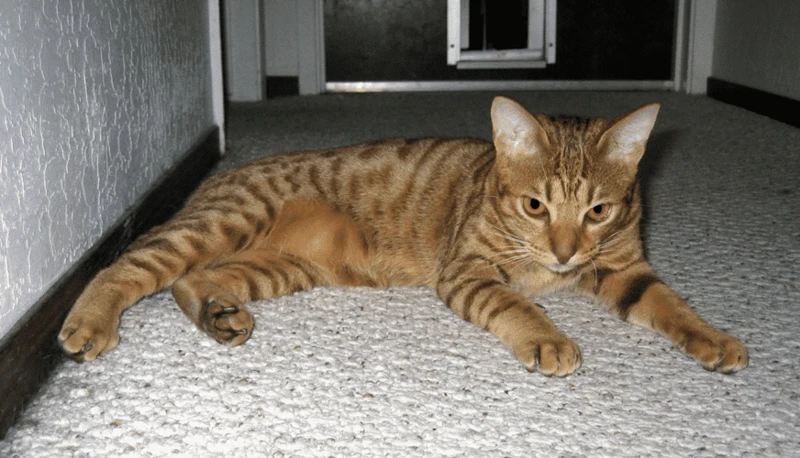
Training your California Spangled using positive reinforcement is a highly effective and humane approach. It involves rewarding desirable behavior to encourage its repetition and development. This method not only promotes obedience but also strengthens the bond between the pet parent and their feline companion. In this section, we will break down the steps of how to use positive reinforcement to train your California Spangled using simple yet effective techniques. By following these steps, you will be able to teach your furry friend good behavior while promoting a positive and nurturing environment. So grab some treats and let’s get started!
Step 1: Define the Desired Behavior
The first step to using positive reinforcement to train your California Spangled is to clearly define the desired behavior that you want your feline friend to exhibit. This can include anything from using a scratching post instead of furniture to using the litter box consistently.
To define the desired behavior, think about what actions you want your cat to take and what specific cues or situations should prompt these behaviors. For example, if you want your cat to use a scratching post instead of furniture, define the desired behavior as “scratching the post when provided as an option.”
Be specific and use clear language . For instance, instead of simply saying “no scratching,” specify which objects are appropriate for scratching and make sure that your cat knows where they are located.
To help define the desired behavior, consider creating a list of specific actions that you want your cat to learn. This can also include behaviors that your cat may already exhibit that you want to reinforce and encourage. By having a clear list of desired behaviors, you’ll be better able to track progress and set achievable goals for your training sessions.
Defining the desired behavior is an essential first step in using positive reinforcement to train your California Spangled. By having a clear understanding of what you want your cat to do, you’ll be better equipped to effectively train and reinforce good behavior.
Step 2: Choose a Reward
When it comes to using positive reinforcement to train your California Spangled, choosing the right reward is one of the critical steps. The right reward will encourage your cat to repeat the desirable behavior.
What are some examples of suitable rewards?
| Reward Type | Examples |
|---|---|
| Treats | Small pieces of chicken or fish, commercial cat treats |
| Playtime | Playing with your cat’s favorite toy or giving them a scratching post |
| Praise | Verbally praising your cat or petting them gently |
| Attention | Giving your cat attention or allowing them to sit on your lap |
It’s essential to choose a reward that your California Spangled values. For some cats, treats might be the ultimate reward, while others may prefer playtime or attention from their human. Take time to get to know your cat and figure out what rewards work best for them.
How much of the reward should I give?
The amount of the reward should be proportionate to the level of effort your cat puts into achieving the desired behavior. For example, if you’re training your cat to use their scratching post instead of your furniture, you might give them a small treat when they scratch the post instead of the sofa. If your cat makes significant progress and no longer scratches your furniture, you could give them a more substantial reward.
How often should I give the reward?
It’s crucial to give the reward immediately after the desirable behavior. The more immediate the reward, the more effective the training will be. However, over time, you can gradually phase out the rewards and give them less frequently. Eventually, the behavior should become a habit, and your cat won’t need a reward every time they perform it correctly.
With the right rewards, using positive reinforcement to train your California Spangled can be a fun and effective way to keep them happy and well-behaved.
Step 3: Use the Reward Consistently
Consistency is key when using positive reinforcement to train your California Spangled. Once you have chosen a reward for your cat, it’s important to use it consistently to reinforce the desired behavior. Here are some tips to help you use the reward consistently:
- Timing is everything: It’s crucial to give the reward immediately after your cat exhibits the desired behavior. This helps your cat understand that the reward is directly linked to that behavior.
- Use the same reward: Stick to the same reward initially to avoid confusion. This could be a food treat, a toy, or your cat’s favorite petting session. Consistently using the same reward will help reinforce your cat’s learning.
- Be generous with your rewards: During the early stages of training, be generous with your rewards, and give them frequently for every instance of desired behavior. It’s important to reward your cat every time it displays the desired behavior so they can connect the reward with the behavior.
- Don’t offer the reward for bad behavior: Be careful not to offer rewards to your cat for displaying bad behavior inadvertently. This will only make things worse and confuse your cat. Only reward them when they display the desired behavior you’re aiming to enforce.
- Use verbal praise: Apart from the tangible rewards, verbal praise is also important. Make sure to praise your cat with kind words, a pat, or gentle strokes to indicate that they’ve done a great job.
- Maintain consistency from everyone in the household: Make sure that everyone in your household is on the same page and understands the importance of rewards during training. This will help avoid confusion and ensure that your cat receives consistent reinforcement for desired behavior.
By using the above tips and sticking to them consistently, you’ll reinforce positive behavior in your California Spangled and make your training more effective. Remember, patience is key, and it may take some time before you notice significant changes in your cat’s behavior. With persistence, you’ll get there.
Step 4: Phase out the Reward
Once your California Spangled is consistently and successfully performing the desired behavior, it’s time to phase out the reward. This doesn’t mean you should stop showing appreciation for their good behavior entirely. Instead, begin reducing the frequency of the reward until it is only given occasionally. This will ensure that your cat continues to maintain the desired behavior, even without the promise of a reward every time.
Here are some steps you can follow to properly phase out the reward when using positive reinforcement to train your California Spangled:
- Step 1: Start by only rewarding the behavior every other time it is performed.
- Step 2: Slowly increase the amount of times the behavior is performed before giving a reward.
- Step 3: Once the behavior has been consistently performed without a reward for a few weeks, you can stop giving rewards altogether.
- Step 4: Monitor the behavior closely for any sign of regression, and if necessary, go back to earlier steps of the training process.
Remember, phasing out the reward too quickly can cause your California Spangled to lose interest in performing the desired behavior. Be patient and take the time to gradually reduce the frequency of the reward to ensure the behavior is maintained in the long run.
How to Use Punishment to Train your California Spangled
While positive reinforcement is often seen as the go-to method for training pets, there may be situations where punishment could be necessary. However, it’s important to use it correctly and with caution. In this section, we will provide a step-by-step guide on how to use punishment in training your California Spangled cat. Keep in mind that punishment should only be used as a last resort, and alternative methods should always be considered first. So, let’s dive into the most effective way to use punishment in a way that is not harmful or traumatizing to your feline friend.
Step 1: Define the Unwanted Behavior
Before you can effectively use punishment to train your California Spangled, you must first identify the unwanted behavior. Take some time to observe your cat’s behavior and note any actions that you would like to deter. This could be anything from scratching furniture to jumping on the counter. Once you have identified the unwanted behavior, define it clearly and specifically.
Examples of defined unwanted behaviors:
- Scratching the armchairs in the living room with claws
- Jumping on the kitchen counter while food is being prepared
- Ignoring commands to stop scratching the wallpaper
It is essential to define the unwanted behavior in such a way that your California Spangled can understand exactly what it is that you want them to stop doing. Use clear language and avoid using broad terms that could be misinterpreted. Once you have defined the unwanted behavior, you will be better equipped to select an appropriate punishment that will help to discourage it.
Step 2: Choose a Punishment that is Not Harmful or Traumatizing
When it comes to punishment, it’s important to choose a method that is not harmful or traumatizing to your California Spangled. It might be tempting to resort to physical punishment, but this can actually make your cat fearful and anxious, and can damage your relationship with your pet. Instead, opt for punishments that are effective without being harmful. Here are some examples of punishment methods that you can use:
| Punishment Method | Description | Effectiveness |
|---|---|---|
| Time Out | Remove your cat from the situation and place them in a quiet room or space for a short period of time. | Effective for calming down your cat and discouraging unwanted behavior. |
| Withdrawal of Attention | Ignore your cat and avoid giving them attention or affection for a brief period of time after they have displayed unwanted behavior. | Effective for discouraging attention-seeking behavior. |
| Verbal Correction | Use a firm tone of voice to correct your cat when they display unwanted behavior. | Effective for discouraging unwanted behavior, but should be used sparingly and with careful timing to avoid causing fear or anxiety. |
| Environment Modification | Modify the environment to discourage unwanted behavior. For example, use double-sided tape to discourage scratching or put baby gates up to prevent access to certain areas. | Effective for discouraging unwanted behavior, but should be used in conjunction with positive reinforcement to encourage desired behavior. |
Remember, when using punishment it’s important to apply it immediately and consistently so that your cat can associate the punishment with the unwanted behavior. Be sure to also praise and reward your cat when they display desired behavior, to reinforce good habits and strengthen your bond with your pet.
Step 3: Apply the Punishment Immediately and Consistently
When using punishment to train your California Spangled, it’s important to apply the punishment immediately and consistently. This means that as soon as the unwanted behavior occurs, you should administer the punishment. The goal is to associate the undesired behavior with the punishment, so it’s important to make sure the punishment follows the behavior without delay.
Here are some tips to help you apply punishment effectively:
- Be Firm: The punishment should be administered in a firm, authoritative manner, without being overly aggressive. Your tone of voice should be calm and assertive, and your body language should convey your displeasure with the behavior.
- Be Consistent: Consistency is key when using punishment. Your cat needs to understand that certain behaviors will always result in the same punishment. If you are inconsistent, your cat may become confused or may even learn to ignore the punishment.
- Use Positive Reinforcement as a Complement: While punishment can be useful in some situations, it’s not the only training tool you should rely on. Positive reinforcement techniques, such as giving treats or praise, can be used in conjunction with punishment to help reinforce desired behaviors.
- Don’t Use Physical Punishment: Physical punishment, such as hitting or smacking your cat, can be traumatizing and may cause more harm than good. Instead, focus on using non-physical forms of punishment, such as a squirt of water or a loud noise.
Remember, punishment should be used sparingly and only in situations where positive reinforcement has not been effective. It’s important to be patient and consistent with your training efforts, and to always focus on reinforcing desired behaviors rather than just punishing unwanted ones.
Step 4: Phase out the Punishment
Once your California Spangled has learned the desired behavior through punishment, it is important to gradually phase out the punishment. Abruptly stopping the punishment may cause confusion and lead to a relapse in the behavior.
Here are some steps you can follow to gradually phase out the punishment:
- 1. Reinforce the desired behavior with positive reinforcement.
- 2. Slowly decrease the frequency of the punishment.
- 3. Replace the punishment with a less severe form of punishment, such as a verbal reprimand or withholding a treat.
- 4. Monitor the behavior closely and be prepared to reintroduce the punishment if necessary.
Remember, your goal is to have your California Spangled behave appropriately without the need for punishment. Positive reinforcement is a more effective and humane method of training, but punishment may be necessary in certain situations. It is up to you to determine which method is best for your furry friend and to make sure that the training is consistent, patient, and effective.
Conclusion
After analyzing the benefits and drawbacks of positive reinforcement and punishment, it is clear that the former is a more effective and humane way to train California Spangled cats. While punishment may provide a quick solution to unwanted behavior, it has been proven to have negative long-term effects on the animal’s mental and emotional well-being.
Positive reinforcement, on the other hand, encourages the cat to learn and grow in a positive environment where they feel safe and loved. It establishes a bond of trust and respect between the owner and the cat, fostering a relationship built on mutual understanding and cooperation.
However, this doesn’t mean that punishment has no place in training a California Spangled. In some cases, it may be necessary to use punishment as a last resort to correct extreme behavior or protect the cat’s safety. But this should always be done with caution and in a way that does not harm the animal.
The key to successful training is consistency, patience, and understanding of your cat’s unique personality and preferences. By using positive reinforcement techniques such as treats, praise, and play, along with clear communication and boundaries, you can achieve long-lasting results without compromising your cat’s well-being.
In conclusion, while punishment may seem like a quick fix, positive reinforcement is ultimately the best way to train your California Spangled. By focusing on creating a positive and nurturing environment, you can build a strong bond with your cat and enjoy a happy and healthy relationship for years to come.
Frequently Asked Questions
1. Can I use a combination of positive reinforcement and punishment?
Yes, you can use a combination of both methods. However, it is important to use them appropriately depending on the behavior you want to encourage or discourage.
2. Is physical punishment effective for training my California Spangled?
No, physical punishment should be avoided as it can be harmful and traumatizing for your cat. It may lead to long-term behavioral issues and trust issues with their owner.
3. What are some common rewards to use for positive reinforcement?
Common rewards include treats, toys, and verbal praise. You can also use petting and cuddles as rewards if your cat is receptive to those types of physical attention.
4. Can punishment cause aggression in California Spangled cats?
Yes, punishment can cause aggression and fearfulness in cats, leading to further behavior issues. It is best to avoid punitive methods and use positive reinforcement instead.
5. How do I phase out rewards in positive reinforcement training?
You can phase out rewards gradually by reducing the frequency and amount of rewards given. Once your cat has consistently displayed the desired behavior, rewards can be given more sporadically or replaced with verbal praise.
6. Should punishment be used for litter box issues?
No, punishment should not be used for litter box issues as it is often a sign of an underlying medical or behavioral issue. Consult with a veterinarian or a certified animal behaviorist to address this problem effectively.
7. Is positive reinforcement only effective for training kittens?
No, positive reinforcement is effective for training cats of all ages. Older cats may take longer to learn new behaviors, but the same methodology can be used regardless of age.
8. Can I use clicker training for my California Spangled?
Yes, clicker training can be a useful tool for positive reinforcement training. The distinct sound of the clicker paired with a reward can reinforce good behavior effectively.
9. What are some examples of non-physical punishment?
Examples of non-physical punishment include withholding attention, verbal reprimands, or briefly removing the cat from the room where the unwanted behavior occurred.
10. How long does it take to see results from positive reinforcement or punishment training?
The timeline for seeing results depends on the cat and the behavior being addressed. Positive reinforcement and punishment can be effective, but patience and consistency are key. Be prepared to invest time and effort into your training efforts.

